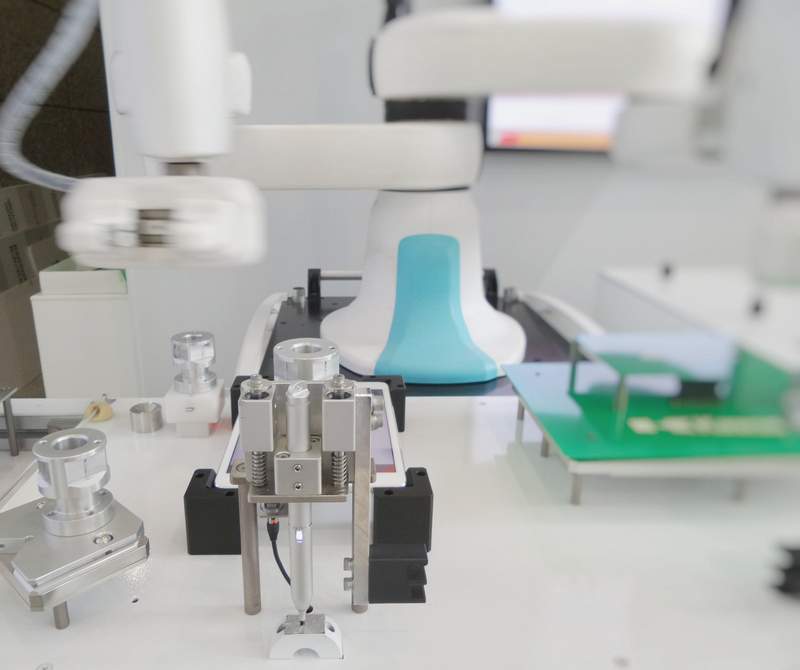Collaborative robots are relatively new to the industry but are slowly transforming how work is done in every sector. There no other industry that has felt more impact than healthcare as far as robot applications are concerned. Think about the handling of toxic waste in hospitals, performing precision surgery, handling infectious patients, and so much more.

Incidentally, this post was done when the world is yet again dealing with one the most challenging health crisis in decades- the Covid-19 pandemic. While collaborative robots have been deployed in healthcare and related areas before, this period challenges those in the industry to push the boundaries in terms of the use of collaborative robotics in healthcare. Areas of interest during this period include:
Patient Testing Using Collaborative Robots
How can we use collaborative robots in handling patients during testing? This particular application could go a long way to improving safety in a highly infectious healthcare environment, such as what we are currently dealing with. There are cases where medical personnel are having to risk their health due to shortages in personal protective equipment.
Perhaps we could see collaborative robots being deployed in drive-through testing centers and airports where there are acute shortages of protective gear or medical personnel. Collaborative commercial robots are well equipped for such applications because there are designed to work near humans and can be versatile.
Handling Infectious Material and Waste
One of the biggest challenges in the control and management of infectious diseases is the handling and safe disposal of potentially infected material such as used tissue, laundry and utensils. While current solutions have been effective so far, there is potential to eliminate human contact using the specially designed pick and place robots.
Indeed, collaborative robots have been used before to handle toxic waste in chemical industries, hospitals research labs, nuclear facilities and waste treatment plants. There is room for more applications in this space, especially since handling patient material is riskier in the current environment.
Disinfection and Fumigation
Robots have the advantage of being more efficient and more accurate when it comes to activities such as medical fumigation and disinfection. They can be used to disinfect large areas with high precision and efficiency allowing humans to concentrate on other tasks as well as protecting them from accidental inhalation or infection.
Patient Care
While it may not be practical or ethical to replace nurses with robots, collaborative robots could be deployed alongside them in isolation wards for patient care. With the appropriate programming and end of arm tooling, robots can be used in patient care for tasks such as administering medications, injections, feeding, taking temperatures, repositioning beds etc.
Medical Manufacturing and The Supply Chain
Of all the automation solutions currently in the market, it is collaborative robots that are well equipped and versatile enough to handle sudden spikes in demand when it comes to manufacturing and the supply chain. During pandemics such as this, demand for specific medical equipment will exceed the supply. For instance, there is an acute shortage of testing and ventilation equipment as of the time of publishing this article.
Collaborative robots such as those made by Universal Robots and other manufacturers are purposely made to serve multiple applications. It’s easier for small and big manufactures using these cobots to repurpose their current setups to produce in-demand medical equipment such as medical ventilators.
How Robots Are Being Used During the Coronavirus Pandemic
While the above examples may seem hypothetical, there are practical examples where robots have been used during the coronavirus pandemic. Here are some inspiring cases:
- In China, unmanned robots are being used to disinfect public places and hospital grounds.
- Motor vehicle manufacturing plants are currently repurposing their robots to manufacture medical equipment in the United States.
- Faced with acute staff shortages, takeaway restaurants in China are currently using collaborative robots for food production and packaging.
- Collaborative robots have been deployed in some major airports to screen incoming and outgoing travelers.
- A new hospital ward run by collaborative robots was recently launched in Wuhan China. The robots are being used to deliver drugs, food and cleaning the ward.
- In the UK, UVD robots are being used to disinfect hospitals.
These examples show that robotics can play an essential role in the medical industry. It’s upon manufacturers and industry stakeholders to keep on innovating and finding new application areas for collaborative robots in the medical industry.





